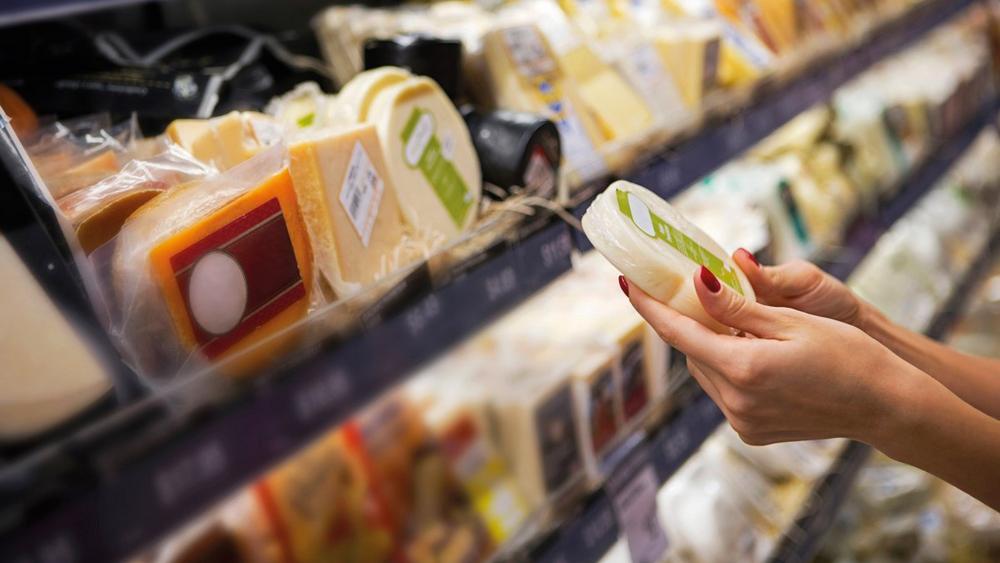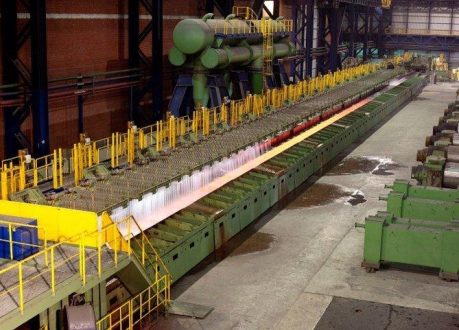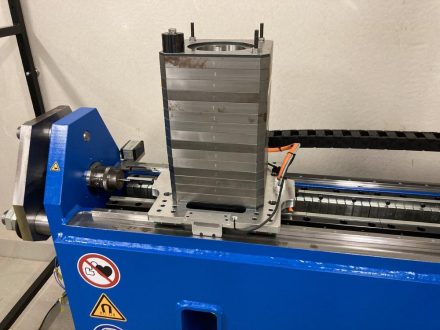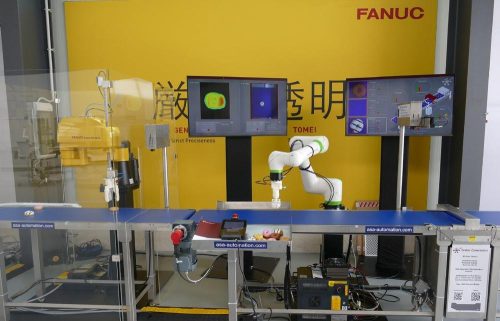
Perfectly Packaged Cheese – for Lasting Freshness and Premium Quality
Microorganisms generally play a key role during cheese production. But with packaged cheese, the aim is to avoid these microbes altogether, as they can spoil the cheese. Hard cheeses with low water (below 56 percent) tend to experience mold, while soft cheeses are more likely to be affected by bacteria. Some cheese varieties turn rancid from oxidation when the fats in the cheese come into contact with oxygen. So there is good evidence that using packaging to protect cheese from microorganisms is beneficial to achieve the longest possible shelf life without forfeiting taste, appearance or quality. This means that it is important to ensure that cheese is not exposed to normal ambient air in the packaging.
Extending shelf life with vacuum packaging
The ambient air and thus most of the oxygen is evacuated from the packaging itself in all types of vacuum packaging. This minimizes the activity of aerobic microbes in cheese and significantly extends the shelf life of packaged cheese. But there are other factors that also play a key role in how long the shelf life will be. In particular, the ingredients in the cheese and the storage temperature influence the shelf life. For a hard cheese that contains little moisture, the shelf life can be extended from two to as much as ten weeks using vacuum packaging. A soft cheese has a normal shelf life of eight days in ambient air. Packaging under vacuum or with a protective gas can extend this period up to three weeks without impacting the quality.
Along with the extended shelf life, vacuum packaging enjoys other advantages:
- Foodstuffs do not suffer from changes in taste, smell, or look.
- Protection from contact and contamination
- Prevention of drying out
- Excellent storage and presentation options
There are various types of packaging that can be used for cheese. Depending on the type of packaging, the cheese is either vacuum-packaged or the air-free packaging is flooded with a protective gas. This process replaces the atmosphere in the packaging with a gas or a gas mixture. The most common examples of this packaging process involve the use of plastic bags, prefabricated trays, or heat-sealed plastic foil. Next to choosing the most suitable type of packaging, the type of vacuum pump used is decisive for the quality of the packaging and thereby the shelf life of the cheese and the preservation of its quality. Each cheese and type of packaging requires an optimally adjusted vacuum level during the packaging process. The lower the ultimate pressure of a vacuum pump is, the more reliably the desired vacuum inside the packaging can be precisely set. Modern rotary vane vacuum pumps achieve an ultimate pressure of 0.1 millibar, for example. This corresponds to one ten thousandth of the atmospheric air pressure at sea level.
Air-tight seal for cheese
Vacuum pumps evacuate the packaging chamber to the desired vacuum level. For cheese, this is usually 100 to 300 millibar. Newly developed technologies make it possible to use vacuum to package cheese with enclosed air without deforming the cheese. The actual evacuation process – meaning the suctioning out of air from a packaging chamber with subsequent aeration and sealing – is essentially similar for all packaging types. The foodstuff goes into the packaging chamber in a bag or a prefabricated tray with a foil covering. The air is then suctioned out by a vacuum pump. This means that the oxygen in the air is also extracted from the packaging chamber and the packaging itself. When the desired vacuum has been achieved, the packaging parts are sealed together. The packaging chamber is now aerated to atmospheric pressure, thus pressing the packaging foil tightly against the packaged foodstuff. When using a protective gas, the packaging chamber is filled with a protective gas after the ambient air is evacuated. Instead of using air, the packaging chamber is aerated to atmospheric pressure with a protective gas, followed by sealing.
Protective gas allows cheese to continue maturing in the packaging
Carbon dioxide (CO2) and nitrogen (N2) are often used as protective gas in cheese packaging. For hard cheese, only carbon dioxide is used to ensure the longest possible shelf life. For other types of cheese, the carbon dioxide amount goes down to between 20 and 40 percent. The rest of the gas mixture usually consists of nitrogen. Using a protective gas for packaging provides the benefit of giving the cheese more space within the packaging chamber, allowing it to breathe and thus further mature, developing more taste. Individual cheese slices can also be removed more easily because they are not pressed together by the foil as they are when using pure vacuum packaging.
The role of the vacuum pump in packaging
Regardless of the type of packaging and the foodstuffs packaged, the vacuum pump always performs the same function: to extract the air from the packaging chamber. Since the beginning of vacuum packaging, this has been achieved using oil-lubricated rotary vane vacuum pumps. In 1963, Busch Vacuum Solutions introduced the first rotary vane vacuum pump to the market, developed especially for this application. This vacuum technology has been continuously developed over the years, such that R5 rotary vane vacuum pumps from Busch continue to offer state-of-the-art technology for vacuum packaging today. Beside their reliability and longevity, they are also characterized by a high water vapor tolerance. The water vapor tolerance of a vacuum pump has a direct influence on the quality of the packaged product. It indicates how much water vapor can be suctioned out of the packaging chamber along with the air to be extracted, without it condensating in the vacuum pump or having a negative effect on the pump-down time. All types of cheese have fairly high water content between 56 percent for hard cheeses and up to 80 percent in cream cheese. If a particular vacuum level is achieved during the evacuation process, the water on or in the cheese begins to evaporate and must additionally be suctioned out by the vacuum pump in the form of vapor. If a low-performance vacuum pump is used, it is unable to deal with this situation, and the pump-down time could become significantly longer. In turn, the longer pump-down time can have a negative effect on product quality because moisture is extracted from the cheese.
For this reason, it is essential to use a vacuum pump that has a sufficiently high pumping speed at low pressures to achieve the desired vacuum level before water evaporates or gases begin to escape from the cheese. Furthermore, a vacuum pump has to be designed in a way that, even when used in cooled spaces, an operating temperature can be reached that prevents water vapor from condensating inside the pump, which could have a negative effect on the performance and service life of the vacuum pump. The proper dimensioning of the vacuum pump and its integration into the control system requires a precise analysis of the packaging process.
Busch Vacuum Solutions is one of the world’s largest producers of vacuum pumps, vacuum systems, blowers and compressors.
Its extensive product portfolio comprises solutions for vacuum and overpressure applications in all industries, including the chemical, semiconductor, medical technology, plastics, and food sectors. It also covers the design and construction of customized vacuum systems, as well as a global service network.
The Busch group is a family-owned company and is still managed by the Busch family. Busch Vacuum Solutions has 3,800 employees in more than 60 companies in over 40 countries and agencies worldwide. Busch is headquartered in Maulburg, in southwest Germany. This is the location of Busch SE headquarters, as well as the German production facility and German sales company. In addition to Maulburg, Busch also has its own production plants in Switzerland, the UK, Czech Republic, Korea, India, China and the USA.
Busch Vacuum Solutions
Schauinslandstraße 1
79689 Maulburg
Telefon: +49 (7622) 681-0
Telefax: +49 (7622) 5484
http://www.buschvacuum.com
E-Mail: sabrina.heinecke@busch.de
![]()




